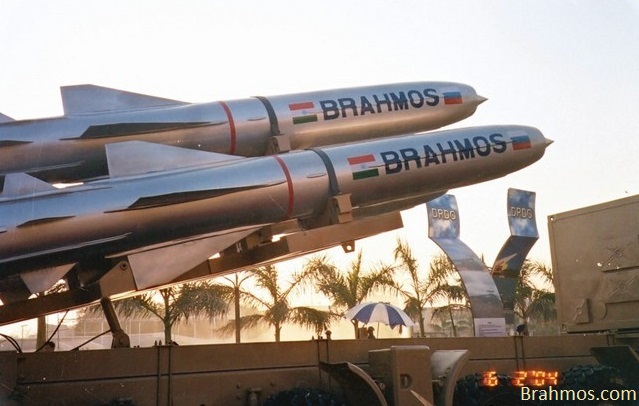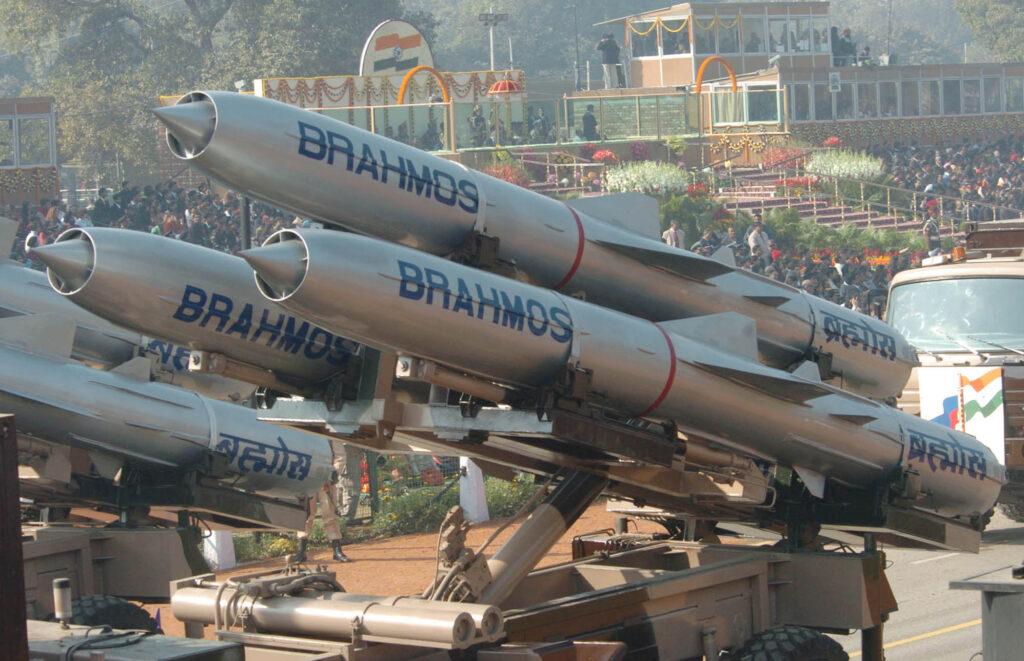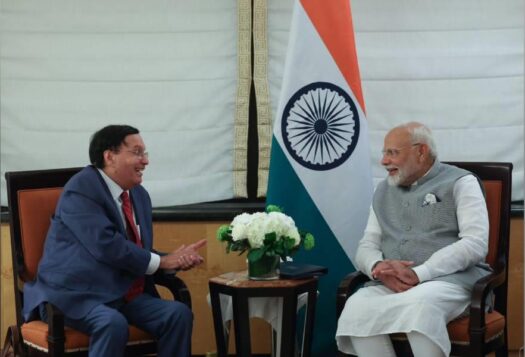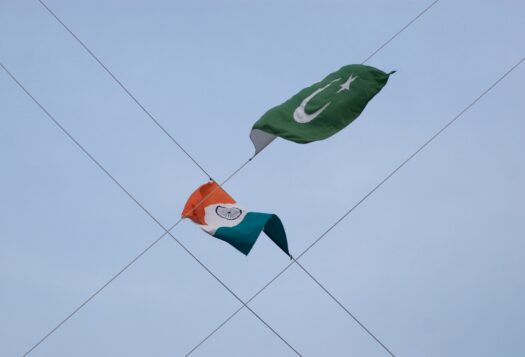
March 9, 2024, marked two years since an Indian BrahMos cruise missile misfired, accidentally landing in Pakistan’s Mian Channu city. While global attention at the time concentrated on Russia’s invasion of Ukraine and the ensuing nuclear risks, the incident in the subcontinent was unprecedented as it was the first time a cruise missile of one nuclear-armed state landed in another.
India’s only operational cruise missile is the supersonic BrahMos, which has land and air variants, while the subsonic Nirbhay remains in development. On the other hand, Pakistan operates supersonic and subsonic variants of the Hatf VII, along with other missiles. In the immediate wake of the 2022 incident, analysts and international institutions made several calls for more effective confidence building measures (CBMs) between India and Pakistan, including extending an existing agreement between both states to pre-notify the other of ballistic missile tests to cruise missiles.
However, a CBM has yet to emerge, and both states have continued to test their suite of cruise missiles since the incident. India and Pakistan share a range of nuclear CBMs, including a unique 1988 non-attack agreement for nuclear installations, but lack an agreement for cruise missiles. Following Pakistan’s second test of its Ababeel ballistic missile equipped with Multiple Independently Targetable Reentry Vehicles (MIRVs) in November 2023, India tested a MIRV-capable Agni-V ballistic missile for the first time this month. The test has re-opened questions about strategic stability on the subcontinent, especially since India is also in the process of purchasing new ballistic missile defense systems and both states are rapidly advancing in missile technology.
The BraMos incident did not result in institutional change, though perhaps it should have, because of the incentive structure for both states to take this step.
In light of these developments, it is crucial to understand why the BraMos incident did not result in a CBM for cruise missiles, and what steps can be taken to move toward institutionalizing better communication at the bilateral level in the event of a future crisis. The BraMos incident did not result in institutional change, though perhaps it should have, because of the incentive structure for both states to take this step. The lack of incentive to create a CBM is driven by a perception that there is insufficient necessity for institutionalized change and that the potential for escalation through conventional weapons is unlikely.
Insufficient Necessity
An agreement on pre-notification for cruise missile tests, as with any other CBM, must pass the test of necessity from the state’s perspective. While such necessity can build over time, it can also result from a high-intensity event that extracts enough cost from both states to drive corrective policy. The 2022 BrahMos misfire failed to generate such necessity for two reasons.
First, the incident fortunately failed to breach the threshold of a “crisis,” which Glenn H. Snyder and Paul Diesing describe as “a sequence of interactions between…two or more sovereign states in severe conflict, short of actual war, but involving the perception of a dangerously high probability of war.” Paired with Thomas Schelling’s theory that the increased risk of inadvertent escalation during a crisis is due to chance, an incident like the BrahMos misfire could assume graver dimensions. At the time of the BrahMos incident, in a comprehensive press conference, Pakistan’s Director General of Inter-Services Public Relations (ISPR) categorically expressed its conviction that the missile was “certainly unarmed” and that the ISPR was not attributing any intentions to India, but leaving the matter for New Delhi to explain. While Pakistani officials complained about India’s silence for more than 24 hours since the accidental launch, Indian officials made several statements in many domestic institutions, including Parliament, expressing “deep regret” and establishing a high-level inquiry commission. Additionally, the freshly implemented ceasefire between both states was holding strong, with Pakistan primarily focused on its border with Afghanistan and India preoccupied with its shared border with China. Collectively, these developments prevented the accident from developing into a crisis by reducing uncertainty and the risk of misperceptions.

Second, the Indian government directed its corrective measures unilaterally rather than bilaterally. India terminated the services of the Indian Air Force officers involved in the accident, which cost India around USD $2.9 million. As Pakistani officials publicly criticized the efficacy of Indian systems, India committed to reviewing the standard operating procedures for testing and inspecting the BrahMos. For New Delhi, any new conclusion about the necessity of CBMs coming out of the incident would be a concession to Pakistan’s critiques — anathema to a government that has followed a policy of “minimal” diplomatic or economic engagement with Pakistan since 2019. Since Indian officials can argue that the misfire was a single incident rather than a trend, there is little incentive for the Indian government to engage with Pakistan for a CBM focused on cruise missiles.
Dubious Possibility
The majority of operational military CBMs between India and Pakistan are intended to reduce nuclear risks rather than escalation through conventional weapons. The 2005 agreement that India and Pakistan would pre-notify each other about ballistic missile tests drew on the 1999 Lahore Declaration and findings from the Composite Dialogue, which included negotiations on both nuclear and conventional CBMs. The resulting agreement demonstrated a clear understanding that ballistic missiles were principally for delivering nuclear payloads and a mutual agreement over managing the potential risk of misperceptions surrounding a ballistic missile launch. Cruise missiles were operational and in further development in both states by 2005. While Pakistan has since developed and operationalized nuclear-capable cruise missiles, Indian analysts maintain that its cruise missiles are non-nuclear. Notwithstanding its possible strategic capabilities or possible future use with a nuclear warhead, the BrahMos is currently oriented toward conventional roles.
Admittedly, regardless of India’s projection of the BrahMos’ non-nuclear status, deterrence is based as much on the enemy’s perception of capabilities as it is on actual capabilities. However, deliberately injecting ambiguity into a cruise missile’s nuclear status has, to date, not been in line with India’s missile development. The debate on whether India is pursuing dual-use missiles is still nascent, relying principally on India’s ability to develop ballistic and quasi-ballistic missiles for conventional roles. This would mark a departure from India’s posture that its Agni ballistic missiles are only for nuclear payloads. In any case, the 2005 agreement would also cover new ballistic missiles. For India, then, engaging in any agreement for cruise missiles would bring their associated nuclear risk at par with that of ballistic missiles, undoing India’s projection of its cruise missiles’ non-nuclear status. The divergent military logic in both states regarding cruise missiles continues to limit the possibility of any agreement related to cruise missiles.
On Strategic Stability
The “insufficient necessity” and “doubtful possibility” of a CBM for cruise missiles, highlighted above, illuminate the existing incentive structure for both states. However, the main casualty in the BrahMos incident was the set of direct communication channels between India and Pakistan. Both states have several hotlines between their respective military, political, and bureaucratic establishments, which they failed to use.
While larger CBMs remain contingent on the political relationship between the countries, the 2022 incident should be a sign that both countries must make greater use of the DGMO hotline.
The most prominent is the hotline between the Directors General of Military Operations (DGMO). India and Pakistan have historically used this hotline to clarify troop movements or possible ceasefire violations along the Line of Control and the International Border. In February 2021, both DGMOs used it to announce a re-commitment to the earlier ceasefire. Save stray incidents of cross-border firing, the fresh ceasefire has held since 2021. More importantly, both sides reiterated that the hotline would be used to “resolve any unforeseen situation or misunderstanding.” The DGMOs’ commitment to “address each other’s core issues and concerns” should be more stringently implemented to ensure they use the hotline more consistently.
While larger CBMs remain contingent on the political relationship between the countries, the 2022 incident should be a sign that both countries must make greater use of the DGMO hotline. The good operational judgment of leadership on both sides of the border and the cold, but calm, bilateral environment limited the escalation of such a potentially disastrous accident. But without establishing proper off-ramps and direct communication habits, another misfire could be far more consequential. In light of this, the DGMO hotline is capable of preventing misperceptions surrounding such accidents, especially between each country’s militaries.
Notably, both states have indeed displayed an ability in the past to let crises lead to conventional CBMs. Following a series of crises pertaining to large-scale military exercises and troop movements in the late 1980s and early 1990s, India and Pakistan agreed to provide advance notice for their exercises close to the border. Moreover, a number of non-institutionalized informal CBMs have long operated at the Line of Control, including flag meetings at multiple levels of command between both armies. Hence, even without enough operational or political incentives for a CBM related to cruise missiles, institutionalizing other conventional CBMs could have an upstream effect, leading to better communication at the bilateral level in the event of a future crisis involving new defense technologies.
Also Read: Agni-V: The New MIRV Race in South Asia.
***
Click here to read this article in Urdu.
Image 1: BrahMos Missile via Wikimedia Commons.
Image 2: BrahMos Cruise Missile via Flickr.


